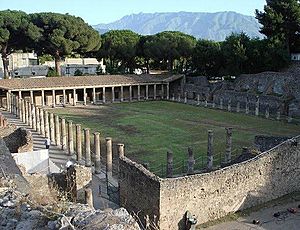Follis (ball) facts for kids
The follis was a special kind of ball used in Ancient Rome. It was also called a Ball of Wind (or pilota de vent) in Spain and Italy during the 15th and 16th centuries. This ball was hollow and filled with air. Because it was inflated, it could jump and bounce when it hit something solid. People used different types of these "balls of wind" to play many popular ball games back then.
Today, most balls are still filled with air. However, we simply call them "balls" no matter how they are made or inflated.
Antonio Scaino and the Ball Game
A writer named Antonio da Salò Scaino wrote an important book about ball games. He did this because Alfonso I d'Este asked him to. Scaino was a priest and a thinker.
In his book, Scaino explained a lot about these "balls of wind." He described how the animal bladder inside the ball worked. He also talked about the small tube and a special "check valve." This valve helped people inflate the ball using a bellows, much like how we inflate things today.
Scaino even mentioned that people sometimes put a little wine inside the ball's chamber. This helped the ball stay flexible and keep its bounce for a longer time. Other people, like Juan Valverde de Amusco, also wrote about the check valve system used in these bladder balls.
How Ancient Balls Were Made
Most "balls of wind" were made from an animal's bladder. This bladder was then covered with leather on the outside. Once the leather cover was on, the bladder was filled with air. People used a special bellows, which is a tool for blowing air, to inflate the ball until it was firm.
Images for kids
-
Portrait of Alfonso d'Este by Titian. Antonio Scaino dedicated his work on the ball game to him.
See also
In Spanish: Pelota de viento para niños



